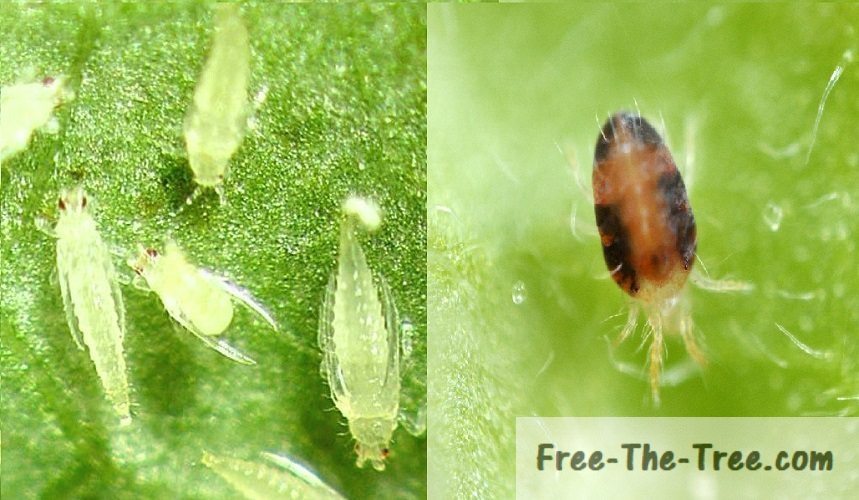How to quickly tell the difference
Before getting into the all the differences between thrips and spider mites, here’s a quick list that can help you get your answer quickly.
All these aspects are in regards to the leaves showing signs of an infestation.
- When you look under an affected leaf, do you see small dots, and maybe some webbing?
Yes? You have Spidermite - Do you see small, long, brown-ish inspects crawling around the veins, or stems, of the leaves?
Or small white larvae in the same locations?
If so, it’s most likely Thrips - Are the signs appearing on leaves near each other, or does the spreading seem to be “a bit everywhere”
In the first case, it’s probably spidermites and the second, thrips
You’re not sure? Keep reading, we go in depth on the differences and how to tell who you’re dealing with















